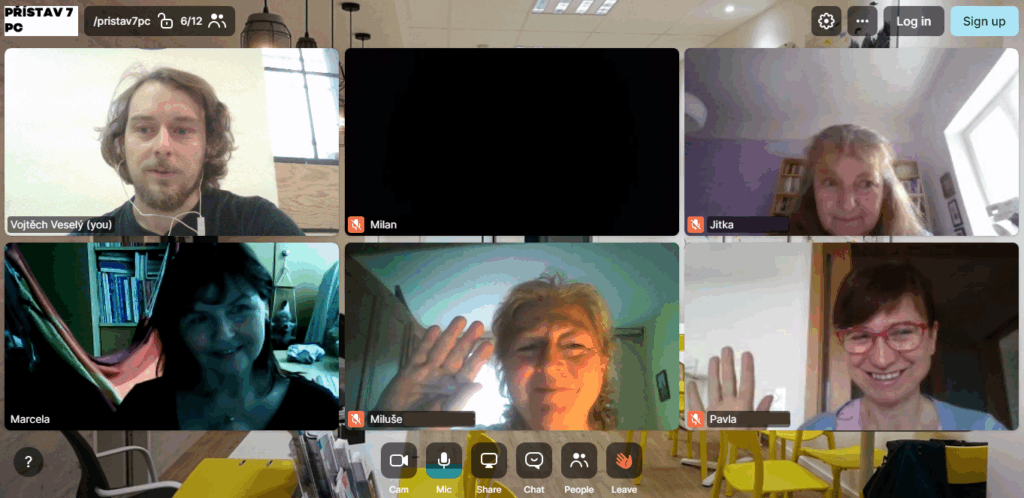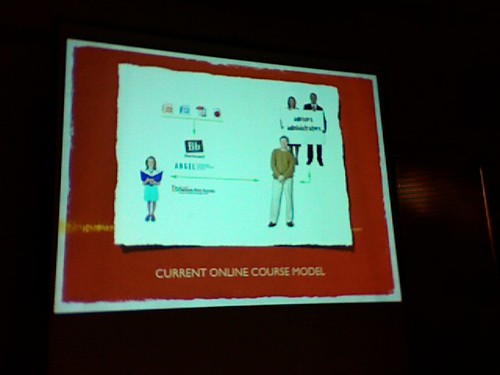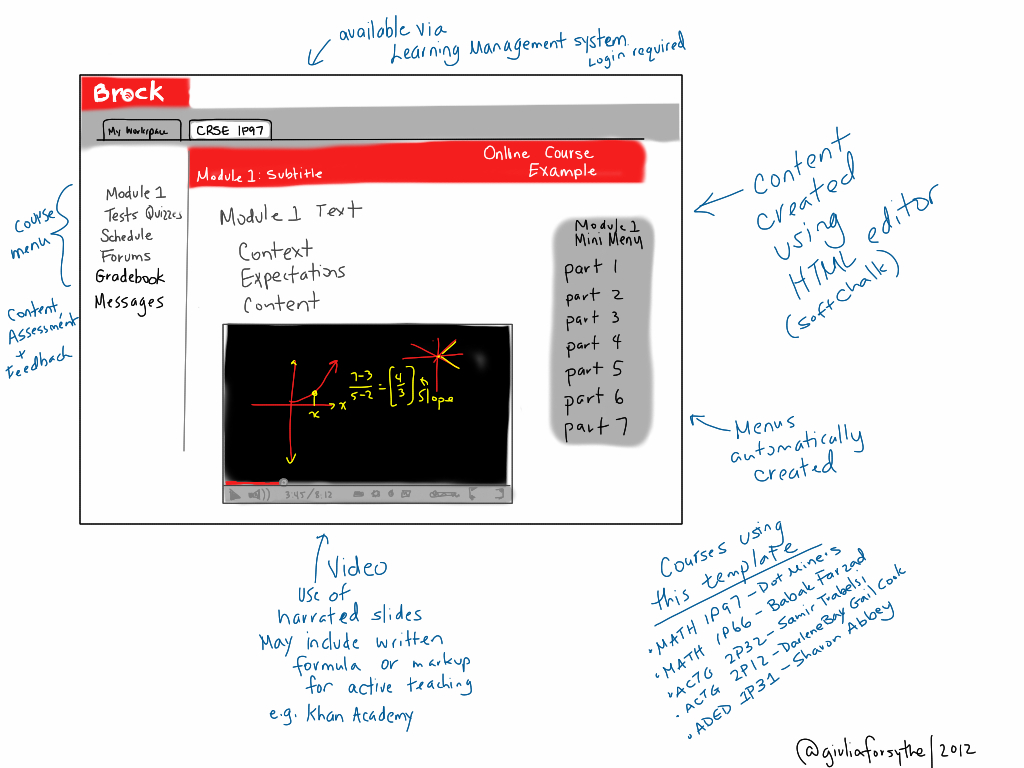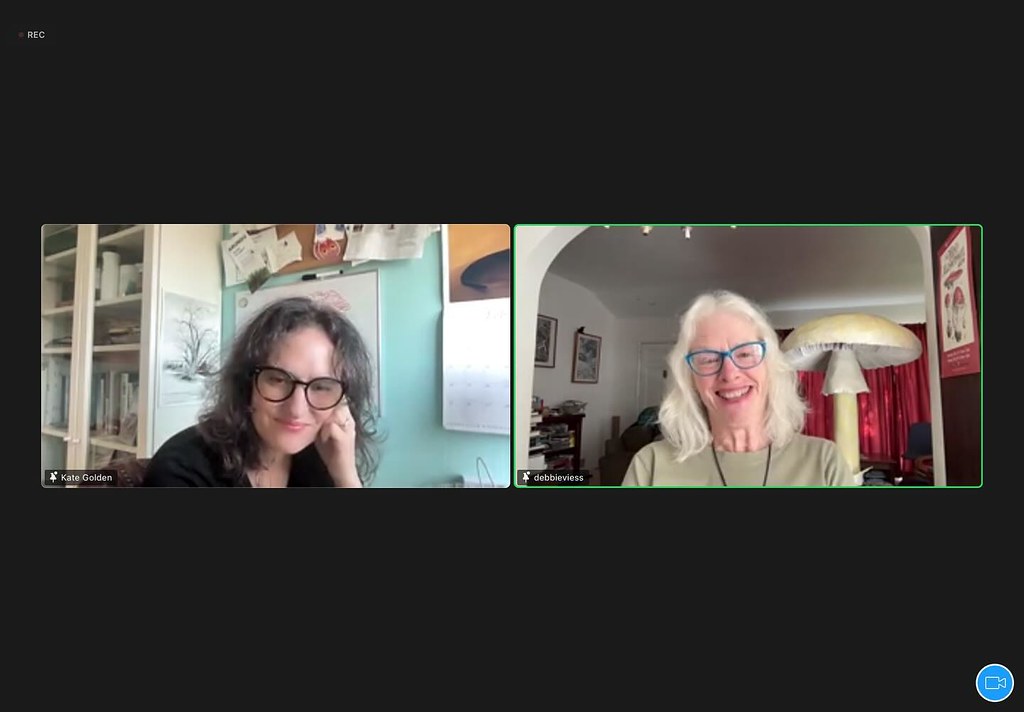
The online learning landscape is booming, expanding at a remarkable 20% annually, transforming how we acquire new skills and knowledge. For aspiring entrepreneurs and seasoned professionals alike, creating an online course presents an unparalleled opportunity to share expertise, build a brand, and generate significant income. However, the path to success in this dynamic industry is far from straightforward.
While the allure of a thriving online course business is strong, many creators, especially newcomers, stumble into common pitfalls that can undermine their efforts. These aren’t just minor missteps; they are often fundamental errors that can lead to low conversion rates, diminished engagement, and ultimately, a disappointing completion rate for learners. Understanding these challenges proactively is the first, most crucial step towards building a truly impactful and profitable educational venture.
This article aims to illuminate the most significant mistakes online course creators make, drawing on insights from industry experts. By dissecting these common errors and offering actionable solutions, we empower you to navigate the complexities of course creation with greater confidence and strategic foresight. Let’s delve into the initial set of critical blunders that, once recognized and rectified, can dramatically improve your chances of success.

1. **Pricing Your Course Too Low**One of the biggest and most counterintuitive mistakes online course creators make is undervaluing their meticulously crafted courses by setting the price too low. While the thought might be to attract more students with an affordable option, this often backfires, inadvertently signaling a lack of quality or depth. Many course creators spend countless hours developing valuable content, only to short-sell their efforts and potential impact.
This pricing dilemma is rooted in a fundamental psychological principle: people often associate a low price with “low quality,” “bad content,” and ultimately, a “time waster.” As Antony C., Founder of Teachng, wisely puts it, “In the eyes of most learners, ‘cheap’ = ‘bad’, ‘expensive’ = ‘good’. This logic is sad but true.” This perception can severely damage a course’s credibility before a student even enrolls, leading to skepticism rather than enthusiasm.
To price your course effectively, a multifaceted approach is essential. Begin by assessing the market value, researching and analyzing the pricing of similar courses within your niche. Consider the unique value you bring, your expertise, and the tangible benefits and outcomes your course promises to learners. These elements collectively contribute to the perceived worth of your offering.
Furthermore, thoroughly evaluate the course content and its quality. Consider the depth and breadth of your material, any additional resources, tools, or bonuses included, and prominently highlight the specific achievements and benefits learners can expect. A well-priced course communicates professionalism and a higher level of commitment to learner success, potentially maximizing your earning potential by at least 300% when done correctly.
Finally, the goal is to strike a balance: find a pricing point that is reasonable for your target learners while accurately reflecting the profound value you are delivering. Consider offering tiered pricing options, such as basic and premium packages, to cater to diverse budgets and needs. Crucially, be prepared to test and iterate on your pricing strategy, adapting based on learner feedback and dynamic market responses to ensure optimal results.
Read more about: Understanding Car Modifications: A Consumer’s Guide to Insurance, Resale Value, and Hidden Costs

2. **Underestimating Your Expertise (“Imposter Syndrome”)**Many aspiring online course creators grapple with imposter syndrome, a pervasive self-doubt that causes them to underestimate their own expertise and knowledge. Even seasoned professionals, after decades of coaching and training, admit to occasionally falling into this trap. This internal struggle can significantly hinder progress, preventing the sharing of incredibly valuable insights that many people are actively seeking to learn.
Despite having years of experience and being recognized as an expert in a specific domain, humility can sometimes morph into self-deprecation, leading to a feeling of being “not-good-enough.” The fundamental truth, however, is that you possess knowledge and practical wisdom that is highly sought after. Your unique experiences and perspectives are precisely what can make a significant impact on others’ learning journeys.
To overcome this confidence barrier, focus intently on your target audience’s needs. Remember, learners are actively seeking your guidance and expertise to grow and solve their problems. Tailor your course content to directly address their specific pain points and provide actionable solutions. It’s vital to understand that complete mastery isn’t a prerequisite; you simply need to offer valuable insights and guidance that help learners progress from their current state.
Embrace the concept of continuous learning and growth, acknowledging that expertise is not a fixed destination but an ongoing journey. Stay vigilant, keeping updated with the latest industry trends, research, and best practices in your field. By openly communicating your commitment to continuous learning, you not only inspire an environment of growth for your learners but also reinforce your own dedication to improvement.
Recognize and lean into your unique knowledge and experience. Take time to reflect on your accomplishments, qualifications, and practical experiences that unequivocally make you qualified to teach. Antony C. from Teachng champions this perspective, stating that by reframing your viewpoint and embracing your expertise while continually learning, you can effectively overcome imposter syndrome and achieve a true state of mastery. Confidence, when grounded in genuine desire to provide value, becomes a powerful tool.

3. **Lack of Proper Market Research**The absence of thorough market research is often the biggest mistake separating a successful online course from a costly failure. Embarking on course creation without a clear understanding of your target audience and the competitive landscape is akin to “walking into a jungle blindfolded.” This fundamental oversight can lead to an ineffective course that simply wastes your precious time and resources.
Success as an online course creator hinges on two critical factors largely within your control: choosing the right topic for your niche and selecting the perfect online course platform. While the latter depends on desired features, the former – choosing the right topic – can unequivocally make or break your ability to succeed. Many creators, in their haste, often skip this vital research phase and hastily select a topic, a common and detrimental error.
At its core, business thrives on the principles of supply and demand. To ensure your course aligns with a genuine market need, you must gain a deeper understanding of your target audience. This involves identifying your ideal learners and their specific needs, conducting surveys or interviews to gather insights into their preferences and pain points, and analyzing demographic and psychographic data to craft truly targeted content.
Equally important is a comprehensive analysis of your competition. Research other online courses operating within your niche, meticulously identifying their strengths and weaknesses. This strategic intelligence allows you to differentiate your course, highlighting a unique value proposition that sets your offering apart. Understanding what already exists helps you carve out a distinct space for your creation.
Effective market research isn’t merely a preliminary step; it’s a foundational pillar. It enables you to validate your course idea, understand learner demand, and position your offering strategically. By investing time in this critical phase, you ensure that your course is not just well-designed, but also highly sought after, significantly increasing its chances of success in a crowded market.
Read more about: Understanding Car Modifications: A Consumer’s Guide to Insurance, Resale Value, and Hidden Costs

4. **Poor Course Planning & Goal Definition**Creating an online course is far more complex than simply compiling a series of videos or assignments; it demands meticulous planning and a clear definition of goals. A major mistake new course creators often make is neglecting to outline specific, measurable objectives, resulting in a disjointed, hard-to-follow, and ultimately less effective learning experience. “Structure your course well, and the rest will follow,” is a foundational principle for success.
Without clear objectives, it becomes nearly impossible to ensure that each lesson incrementally builds upon the last, or that student learning progresses at a healthy and consistent rate. Before you even begin designing the curriculum, it’s imperative to define big-picture objectives. Ask yourself: What tangible outcomes should students achieve? What will they learn? How will this course enhance their lives, knowledge, or future career prospects? Will they be able to apply their knowledge immediately?
By answering these questions comprehensively before crafting your syllabus, you ensure that your curriculum is tightly aligned with these overarching goals. This strategic alignment not only makes the learning journey clearer for your students but also streamlines your own creation process, leading to a more cohesive and impactful course. It provides a roadmap for both you and your learners.
Effective planning extends to the overall course structure and organization. Your content must be arranged logically and sequentially, guiding learners through a progressive journey. Utilize clear headings, subheadings, and modules to break down information into digestible chunks. Providing a comprehensive course outline and intuitive navigation tools is also vital, ensuring learners can easily access different sections and understand their progression.
Furthermore, integrating multimedia strategically is a non-negotiable aspect of modern course design. Leverage videos, images, infographics, and interactive elements to not only enhance learner engagement but also to effectively support learning objectives and simplify complex concepts. Ensure that all multimedia is compatible with various devices and optimized for fast load times, guaranteeing a seamless and professional learning experience that keeps students invested.
Read more about: Dusty Relic to Road-Worthy Legend: Your Ultimate Guide to Reviving a Classic Car After Years in Storage

5. **Suboptimal Instructional Design & Engagement**The instructional design of an online course plays a pivotal role in facilitating effective learning and ensuring learners meet their educational needs. Overlooking robust instructional design principles is a significant mistake that can diminish a course’s educational impact, even if the content itself is valuable. It’s about how the information is presented, absorbed, and applied.
To create a truly impactful course, integrate proven pedagogical principles. Apply instructional design models such as ADDIE (Analysis, Design, Development, Implementation, Evaluation) or SAM (Successive Approximation Model), which provide structured frameworks for course development. Incorporate active learning techniques, including engaging discussions, realistic case studies, and practical simulations, to move beyond passive consumption and encourage deeper understanding.
Utilize appropriate instructional strategies like scaffolding, which gradually builds complexity, and chunking, which breaks information into manageable segments, to promote comprehension and retention. These techniques ensure that learners are not overwhelmed but rather supported as they progress through the material, making complex topics more accessible and learning more efficient.
Beyond structure, fostering interactivity and engagement is paramount. Encourage active learner participation through interactive quizzes, polls, and discussions. Design collaborative learning experiences, such as group projects or peer feedback sessions, to build a sense of community and allow learners to learn from each other. Consider incorporating gamification elements, like badges or leaderboards, to motivate and incentivize progress.
Moreover, actively utilizing engaging content is key. Go beyond mere lecture-style teaching by incorporating a variety of visual content, including videos, images, infographics, charts, and graphs. These visuals help break up text-heavy sections, preventing monotony. Diversify activities to prevent boredom, mixing quizzes and polls with discussion forums and storytelling elements like case studies or examples from successful professionals, bringing topics vividly to life for students.
Read more about: Navigating the Tides: How Small Businesses Are Mastering Seasonal Hiring Challenges for Sustained Growth

6. **Insufficient Assessment & Feedback Mechanisms**A critical disadvantage often cited for online courses is the perceived lack of in-person feedback. However, many advanced online course platforms now provide creators with sophisticated options to deliver personalized feedback directly within the course environment. Failing to fully utilize these assessment and feedback mechanisms is a substantial mistake, as they are essential for tracking learner progress, reinforcing learning, and fostering an engaging educational journey.
To ensure your course content is truly engaging and effective, strategically incorporate formative assessments throughout. These can include quizzes, assignments, or interactive activities designed to evaluate understanding at various points in the course. Providing immediate feedback on these assessments is crucial, as it reinforces learning, clarifies misconceptions, and helps learners adjust their approach in real-time. Employ a variety of assessment formats, such as multiple-choice questions (MCQs) for concept mastery, essay questions for deeper dives, short answer questions for reflection, and even group assignments or performance tasks for practical application and skill demonstration.
Beyond immediate, automated feedback, it is imperative to establish clear guidelines for providing timely and constructive personalized feedback. This type of feedback goes beyond right or wrong answers; it highlights strengths, pinpoints specific areas for improvement, and offers actionable suggestions for growth. Encouraging self-reflection and self-assessment further empowers learners, fostering autonomy and ownership over their learning journey.
By integrating diverse assessment types, such as MCQs for overall understanding, essay questions for complex topics, short answer questions for reflection, and performance tasks for practical application (like coding or tech projects), you gain comprehensive insights into student learning. Platforms like OnlineCourseHost.Com facilitate the addition of these varied assignments and quizzes, making courses more interactive and effective in gauging student comprehension of key concepts.
Both formative assessments and timely, constructive feedback are indispensable for a successful online course. They not only validate learning but also differentiate your offering from others in the market. Prioritizing robust assessment and feedback mechanisms ensures that learners are continuously supported, motivated, and aware of their progress, leading to higher completion rates and greater satisfaction.
Read more about: Your Ultimate Checklist: 14 Essential Things to Examine During Your Used Car Test Drive

7. **Ineffective Marketing & Promotion Strategies**Many new course creators operate under the mistaken assumption that if they simply create a high-quality online course, learners will naturally find it and enroll. This passive approach is one of the gravest errors in the online course space. An exceptional course, however well-designed, cannot succeed without effective marketing and promotion. A course launch is never truly complete without a robust strategy to reach its target audience.
To drive sales and engagement, developing a comprehensive marketing plan and establishing an effective sales funnel are non-negotiable. This plan should encompass a variety of strategies, from leveraging social media and content marketing to executing targeted email campaigns and forming strategic partnerships. Additionally, utilizing search engine optimization (SEO) techniques is crucial for enhancing visibility, ensuring your course appears prominently in relevant searches. Engage potential learners through webinars, guest blogging, or podcast interviews to expand your reach.
Crucial to any marketing effort is strong branding and positioning. Develop a brand identity that deeply resonates with your target audience, clearly communicating the unique value and benefits your course offers. This differentiation is key; emphasize your unique expertise, a distinctive teaching methodology, or the specific transformation learners can expect. A compelling brand helps you stand out in a crowded market and builds immediate trust and recognition.
Before diving into specific marketing tactics, it’s vital to reflect on fundamental branding questions: What are you currently known for? What do you aspire to be known for in the future? What do you want people to think of when your name or course is mentioned? Answering these questions provides the clarity needed to craft a consistent and powerful brand message that underpins all your promotional activities.
Ultimately, a well-executed marketing and promotion strategy is the engine that drives enrollments and maximizes your course’s impact. It’s about more than just selling; it’s about connecting your valuable content with the learners who need it most. By proactively marketing your course, you ensure that your hard work translates into a thriving educational business and helps you reach your entrepreneurial goals.
Read more about: Unmasking the Truth: 12 Critical Transparency Gaps in the Vitamin Supplement Industry (And Why Wellness Experts Are Saying ‘Don’t Waste Your Money’)

8. **Lack of Continuous Improvement**Building an online course business is far from a “set it and forget it” endeavor. A significant oversight many course creators make, even after initial success, is neglecting the continuous improvement of their offerings. If you aim to thrive as an online creator, consistently refining every aspect of your course is absolutely non-negotiable for sustained growth and relevance. It’s about building an online course business, not just a single course.
Depending on your niche and the specific topics your online course covers, it inherently requires constant updating and evolving with the needs of learners. Industry best practices emerge, and technology advances at a rapid pace. Staying ahead in the competitive online course market demands proactive engagement with these changes, ensuring your course remains fresh, valuable, and impactful year after year.
To foster this crucial growth, actively gather learner feedback through surveys, dedicated feedback forms, or comprehensive course evaluations. These mechanisms are invaluable for collecting insights directly from your students. Analyze this feedback meticulously to pinpoint areas ripe for improvement and address any concerns raised by your audience, then implement iterative updates based on these insights.
Furthermore, it’s essential to stay relentlessly updated with emerging trends in online education and new instructional technologies. Explore innovative tools, platforms, or teaching methodologies that can significantly enhance your course delivery and overall learner experience. Attending industry conferences, webinars, or workshops is an excellent way to expand your knowledge and keep your course on the cutting edge.
Read more about: Rev Up Your Restoration: The Ultimate Guide to the Best Free Online Forums for Classic Car Enthusiasts

9. **Inadequate Support and Communication**Imagine the frustration of waiting 45 minutes on hold with a bank for a simple question, or being brushed off by a lecturer when seeking clarification. Your learners feel the same way when support is lacking. Providing exceptional support and maintaining clear, effective communication with your students is not just a courtesy; it’s crucial for their success and overall satisfaction with your online course. This dedication is often the secret to earning those coveted 5-star reviews.
To ensure prompt and responsive support, establish clear channels of communication from the outset. This could include dedicated email addresses, active discussion forums, or even real-time chat platforms. Make it a priority to respond to learner inquiries and concerns in a timely manner, demonstrating that their questions are valued. Additionally, a comprehensive FAQ section or knowledge base can proactively address common issues, empowering learners to find answers independently.
Beyond reactive support, actively increase engagement with your learners. Foster a vibrant sense of community among them through dedicated discussion forums or private social media groups where they can connect, share insights, and learn from one another. Encouraging active participation and facilitating peer-to-peer interaction builds a supportive network. Consider offering periodic live sessions or webinars for real-time engagement, offering direct Q&A opportunities and a personal touch.
Crucially, be prepared to adapt your course based on learner feedback. Pay close attention to insights regarding course content, structure, or delivery. Continuously improve and update your course with these valuable suggestions, ensuring that any enhancements align directly with the original learning objectives. This iterative process shows learners that their voices are heard and valued.
By prioritizing robust support and maintaining open lines of communication, you cultivate a positive learning environment that fosters strong, lasting relationships with your learners. Adding a personal touch to these interactions can transform casual students into true fans for your course, significantly boosting satisfaction and word-of-mouth referrals.
Read more about: Understanding Car Modifications: A Consumer’s Guide to Insurance, Resale Value, and Hidden Costs

10. **Neglecting Post-Sale Engagement**A significant, yet often overlooked, mistake online course creators make—even experienced ones—is neglecting their existing customers after the initial sale. Once a learner has enrolled, many creators shift their focus almost entirely to acquiring new learners, which is a costly misstep. Customer acquisition is inherently harder and far more expensive than nurturing existing relationships.
The statistics underscore this crucial point: the probability of selling to a totally new prospect is a mere 5% to 20%, or even lower. In stark contrast, the probability of selling to an existing customer soars to as high as 60% to 70%. As Antony C. from Teachng emphatically states, “You are 11 times more likely to sell to your existing customer than to a new customer, thus it is most important to nurture and provide as much value to your current customer than to attract new customer.” This insight alone highlights the immense value of post-sale engagement.
To capitalize on this, maintain ongoing communication with your learners long after they’ve made their initial purchase. This can be achieved through regular email newsletters, exclusive updates, or a dedicated community platform. Share relevant industry insights, provide additional resources, or offer bonus content that further supports their learning journey. Keeping them informed about updates, improvements, or new offerings related to the course reinforces your commitment to their growth.
Furthermore, strategically identify opportunities to offer upsells and cross-sells. This involves presenting supplementary products, services, or advanced courses that naturally complement their original purchase. Providing incentives or exclusive discounts for existing customers can encourage them to explore these additional offerings, extending their learning path with your brand. Highlight the continued value and benefits they can gain by deepening their engagement.
Lastly, actively gather testimonials and success stories from your satisfied learners. Encourage them to share their positive experiences, which serve as powerful social proof to attract new customers. Utilize these testimonials on your website, social media, and in your marketing materials to reinforce the value of your course. By fostering a sense of community, celebrating learner achievements, and providing continuous value, you ensure a thriving ecosystem around your offerings, turning one-time buyers into loyal advocates.
Read more about: Navigating the Rough Road: The 13 Critical Reasons Why Used Car Dealerships Fail and How to Thrive
11. **Searching for the Single “Best Place” to Publish Your Online Courses**One of the most common and potentially dangerous thought processes for beginner online course creators is the tireless search for one elusive, single place to publish all their courses. This idea, while tempting, can severely compromise the success of your course creation journey right from the start. The notion that a single “best place” exists is a fallacy in the dynamic online learning landscape.
The truth is far more nuanced: there is no single, universally superior platform on the internet where it’s best to publish every course. To maximize your reach and impact, your strategy must be to get your course in front of the largest number of people who could potentially be interested. This often means recognizing that communities of learners gather in diverse places across the internet, each with its unique characteristics and audience demographics.
Therefore, the effective strategy for most creators is to publish their courses in multiple places, including their own website. Each marketplace offers its own built-in organic community, which might be particularly well-adapted to your specific audience and niche. This multi-platform approach ensures that you meet your audience wherever they are, rather than waiting for them to find a single point of presence.
For example, certain content performs exceptionally well on particular platforms: web development courses tend to thrive on platforms like Udemy, while creative skills courses often see success on both Udemy and Skillshare. Art courses, conversely, might find a more receptive audience on Skillshare, and business and marketing courses generally perform well across a wide array of platforms. Recognizing these nuances and diversifying your publishing channels is key to widespread success.

12. **Dividing a Course Into Huge Chunks**In today’s fast-paced world, learners are increasingly wary of committing to courses that demand hours upon hours of uninterrupted attention. A significant error new course creators frequently make is structuring their content into excessively lengthy and intimidating chunks. This approach often overwhelms students, making the learning journey seem arduous and leading to disengagement rather than enthusiastic participation.
To combat this, the most effective solution is to meticulously break up your course content into more digestible pieces. Whether it involves utilizing clear chapters, distinct modules, or concise subheadings, the goal is to organize your material in a way that allows users to easily find what they are looking for and consume information without feeling inundated. Additionally, consider making any supplemental materials or extensive resources optional, preventing introductory learners from being bogged down with too much information at once.
Furthermore, don’t shy away from dissecting long lessons and extended lectures. Instead of expecting participants to endure a single two-hour session, strategically segment the larger lesson into two or even three distinct parts. Crucially, intersperse these segments with opportunities for students to practice, reflect, and digest the information before they continue their learning journey. This intentional pacing significantly aids comprehension and retention.
By embracing this modular approach, you ensure that students are actually able to absorb the material effectively, rather than merely glossing over it quickly due to the sheer volume of information presented in one sitting. This thoughtful content delivery enhances the learning experience, making your course more approachable, engaging, and ultimately, more successful for every student.
Read more about: Honest Question: What Gives? 12 Once-Popular American Eats Nobody Touches Now

13. **Not Being Open to Feedback**It’s an immutable truth that no course creator will ever possess complete knowledge or be able to anticipate every single user’s experience. Consequently, a critical mistake many creators make is not being genuinely open to feedback, especially when it’s perceived as negative. While our human nature might initially recoil from criticism, negative reviews should be viewed not as personal attacks, but as invaluable opportunities to assess areas for improvement and implement changes that enhance the course for future participants.
The key to leveraging feedback effectively is adopting the right perspective: avoid taking comments personally and instead, use them to objectively inform your decisions moving forward. For instance, if a reviewer notes that their experience with the course was lacking in structure or clarity, this isn’t a condemnation of your entire effort, but rather concrete, actionable information that can guide you to provide more robust organization and clearer communication in future iterations.
Experienced course creators understand that the most effective path to success begins with their target audience. Even before the official launch, actively engage with those you intend to market your course to. Ask them what they like, what they don’t like, and if there’s anything else they would like to see included. This preliminary outreach can provide invaluable insight, allowing you to refine your content and create better, more resonant experiences for your users from day one.
Beyond your immediate audience, proactively seek out constructive feedback from trusted colleagues or mentors who have experience taking online courses themselves. Their fresh perspectives can highlight aspects you might have overlooked. What mistakes did they encounter in other courses? What would they improve upon in yours? Taking the time to gather this nuanced feedback and translating it into actionable items will profoundly improve the overall quality of your course.
Therefore, embrace criticism as a gift. Don’t be afraid of negative comments; instead, view them as chances to learn something new or identify an area ripe for improvement. Feedback from others can have a powerfully transformative effect on the final product of your course, making it significantly easier for future users to engage with and benefit from it in both obvious and subtle ways, securing its long-term viability and impact.
Read more about: Is the 2025 Toyota Highlander Hybrid the Ultimate Midsize SUV? An In-Depth Consumer Reports Analysis

14. **Not Building a Strong Personal Brand**Creating and selling online courses extends far beyond merely offering compelling content; it inherently involves cultivating your personal brand. A critical, and often costly, mistake for many course creators is neglecting to intentionally build and maintain a strong personal brand. In a crowded digital space, your brand serves as your identifier, your promise, and your unique selling proposition.
The importance of a robust personal brand cannot be overstated. Fundamentally, it builds trust, because as the saying goes, “people trust people.” When you establish a strong, recognizable personal brand and a visible presence within the online course market, potential customers are far more likely to feel a connection and, consequently, more inclined to purchase from you. Trust is the bedrock of all successful online transactions.
A well-developed personal brand doesn’t just foster trust; it actively attracts more sales. When potential customers are familiar with your brand, they develop clear expectations regarding the quality, style, and value of your courses. This established familiarity translates directly into increased enrollment because students feel confident in what they are buying. Moreover, an excellent brand reputation often correlates with positive reviews. When people are familiar with your brand and have positive associations, they are more likely to leave glowing reviews, further enhancing your online reputation and attracting even more customers.
Therefore, if your aspiration is to create courses that truly stand out from the competition and draw in a steady stream of satisfied customers, dedicate significant effort to building your personal brand and reputation amongst potential clients. An established presence, underscored by an awesome online reputation—think high ratings on course review websites—will entice more customers and encourage them to not only purchase your initial offerings but to return for future learning opportunities.
Read more about: Rev Up Your Restoration: The Ultimate Guide to the Best Free Online Forums for Classic Car Enthusiasts

15. **Rushing Your Course**In the eager anticipation of launching a course and beginning to generate income, it can be incredibly tempting for new creators to rush through the development process. However, yielding to this temptation is one of the gravest mistakes one can make. Rushing invariably sets you up for failure, leading to the creation of an inferior product that will ultimately dissatisfy your students and harm your reputation.
Consider your own experiences: have you ever taken a course or read a book where the content felt hastily thrown together? Chances are the creator failed to thoroughly explain concepts or ensure everything was easily understandable. You certainly don’t want to establish that kind of reputation for your own offerings. Instead, commit to a methodical approach, meticulously planning how much time each step of the process will genuinely require, and then sticking to that commitment.
There are specific, detrimental pitfalls to avoid when rushing your course. Skipping the crucial research phase, which involves identifying topics people genuinely need help with in your niche, means you’re building content without a solid foundation of demand. Similarly, neglecting to create an outline for each video or module can lead to disjointed lessons and unnecessary information, making your course hard to follow. Most importantly, rushing often means skipping proofreading, and typos or grammatical mistakes instantly diminish the perceived quality of your course in the eyes of learners.
Finally, a hurried launch often bypasses the invaluable step of asking for feedback. Gathering insights from friends, family, or potential students throughout the creation process is essential for identifying weaknesses and making improvements before launch. By avoiding these common mistakes and dedicating the necessary time and care, you ensure a well-crafted, effective course that truly serves your learners and ultimately enhances your reputation as a trusted educator.
**A Final Word on Strategic Success**
Read more about: Beyond the Hype: Unpacking 15 Infamous Rides That Earned a ‘Jerk Car’ Reputation Among Enthusiasts
Navigating the vibrant, rapidly expanding online learning landscape, which continues to grow at a remarkable 20% annually, requires more than just passion—it demands strategic foresight and a commitment to excellence. As we’ve dissected these crucial errors, from initial planning to post-sale engagement, it becomes clear that success as an “edupreneur” is built on a foundation of continuous improvement, learner-centric design, and proactive engagement. By meticulously avoiding these common missteps, you not only elevate the quality of your educational offerings but also secure a path towards sustained growth, higher completion rates, and a truly impactful online course business in this dynamic digital era.



